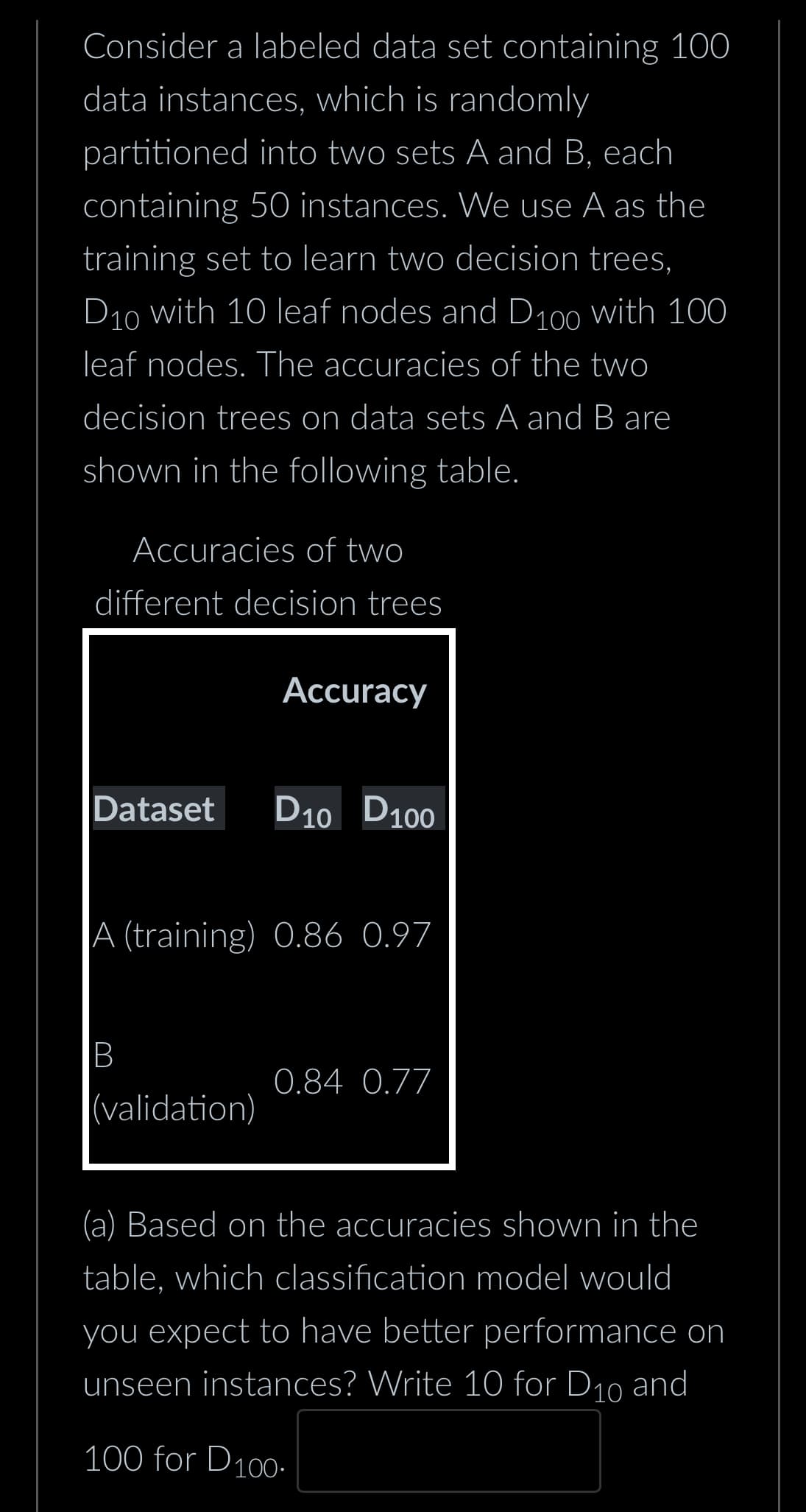Consider a labeled data set containing 100 data instances, which is randomly partitioned into two sets A and B, each containing 50 instances. We use A as the training set to learn two decision trees, D10 with 10 leaf nodes and D100 with 100 leaf nodes. The accuracies of the two decision trees on data sets A and B are shown in the following table. Accuracies of two different decision trees Dataset D10 D100 Accuracy A (training) 0.86 0.97 ІВ B (validation) 0.84 0.77 (a) Based on the accuracies shown in the table, which classification model would you expect to have better performance on unseen instances? Write 10 for D₁0 and 100 for D100-
Consider a labeled data set containing 100 data instances, which is randomly partitioned into two sets A and B, each containing 50 instances. We use A as the training set to learn two decision trees, D10 with 10 leaf nodes and D100 with 100 leaf nodes. The accuracies of the two decision trees on data sets A and B are shown in the following table. Accuracies of two different decision trees Dataset D10 D100 Accuracy A (training) 0.86 0.97 ІВ B (validation) 0.84 0.77 (a) Based on the accuracies shown in the table, which classification model would you expect to have better performance on unseen instances? Write 10 for D₁0 and 100 for D100-
Related questions
Question

Transcribed Image Text:Consider a labeled data set containing 100
data instances, which is randomly
partitioned into two sets A and B, each
containing 50 instances. We use A as the
training set to learn two decision trees,
D10 with 10 leaf nodes and D100 with 100
leaf nodes. The accuracies of the two
decision trees on data sets A and B are
shown in the following table.
Accuracies of two
different decision trees
Dataset
B
Accuracy
A (training) 0.86 0.97
(validation)
D10 D100
0.84 0.77
(a) Based on the accuracies shown in the
table, which classification model would
you expect to have better performance on
unseen instances? Write 10 for D₁0 and
100 for D100.
Expert Solution
This question has been solved!
Explore an expertly crafted, step-by-step solution for a thorough understanding of key concepts.
This is a popular solution!
Trending now
This is a popular solution!
Step by step
Solved in 3 steps
